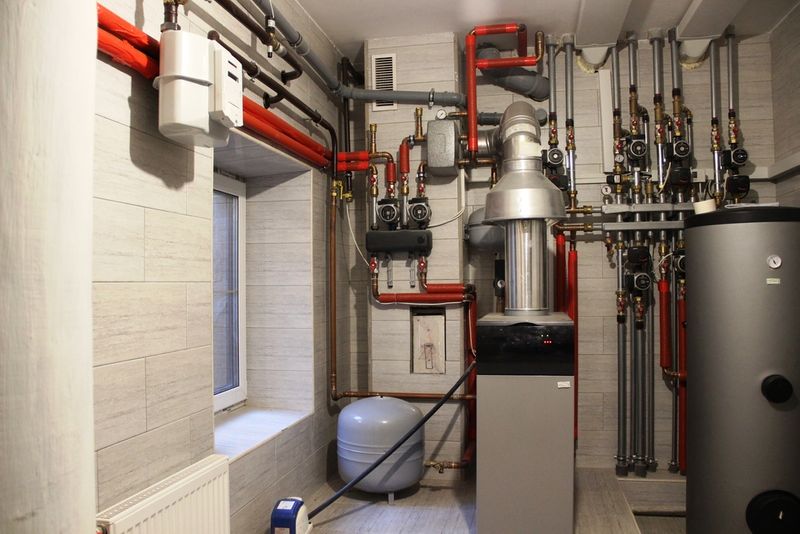Your furnace is what keeps your home warm and comfortable. But, if you have an older furnace, it may not heat your home as well as it once has.
In this blog post, we will discuss how long furnaces last, what can shorten their lifespan, and how you can get the most out of your furnace. We will also explain when it may be time to replace your furnace with a newer, energy-efficient model.
The Average Furnace Lifespan
One of the questions we are always asked is, “How long does a furnace last?”. This is a difficult question to answer because it differs depending on your furnace, its maintenance and its use. But, the average lifespan of a gas furnace is 15 to 20 years. Electric furnaces last much longer, typically ranging from 20 to 30 years.
Factors That Influence Your Heating System Life Expectancy

Lack of Maintenance
Furnace maintenance is one of the best ways to extend your furnace’s lifespan. Much like your air conditioner, your furnace runs constantly to keep your home at an optimal temperature. Maintenance and repair can help your furnace stay in good condition.
An HVAC technician should inspect your electric or gas furnace once a year before the heating season begins. Annual maintenance will help you mitigate wear and tear, as well as notice any warning signs and complete repair before it becomes costly.
Thermostat Settings
Believe it or not, your personal comfort has an impact on your furnace lifespan. If you like to set your thermostat higher during the cold Canadian winters, your electric or gas furnace will turn on more frequently. A thermostat that is set relatively low can also cause your furnace to kick on more often; it will turn on more frequently but for short periods.
A thermostat set too high or too low could make your furnace run more frequently, which can cause more wear and tear. As a result, you will need to get furnace repair or maintenance more often.
Poor Installation
According to Energy Star, over half of all new furnaces are installed incorrectly. Incorrect installation can look like:
- Poorly sealed ductwork
- Incorrectly installed fuel lines
- Poor or little drainage for a high-efficiency furnace
Incorrect installation can make your new furnace less energy-efficient, driving your electricity or gas bill up. Improper installation can also cause uneven heating, heating issues, and too little or too much moisture in your home.
Professional installation is key to ensuring that your new furnace lasts long. Always have a certified technician install your furnace.

Furnace Size
Furnace size can either shorten or extend its average life expectancy. If your furnace is too big for your home, it will only kick on for a short period of time. Short cycles can create more wear and tear on your furnace components, causing them to break down faster. In comparison, furnaces that are too small will have to work harder to heat your space. As a result, the furnace will turn on more often and stay on for longer.
Get The Most Out Of Your Furnace
Many furnaces last long past their anticipated lifespan. The key to extending your furnace’s life expectancy is to perform maintenance frequently. A well-maintained furnace is a long lasting furnace.
Here are some things that you can do to extend the life of electric or gas furnaces:
- Clean the filter monthly—A dirty filter can restrict flow, and not enough air flow can damage a furnace. You should replace the filter monthly during the winter season to ensure adequate air movement.
- Frequent service—Get your gas or electric furnace inspected at least once a year. Regular maintenance will reduce heating repair and extend your furnace’s lifespan.
- Stop constantly adjusting your heat—Find a temperature that is perfect for your household and keep it there. Adjusting your thermostat constantly can put extra stress on your heating system.
When Should I Replace My Furnace?
Most furnaces have tell-tale signs that they need replacing. Here’s how you can tell that it is time to replace a furnace.
Current Efficiency Is Decreasing
An old furnace should be replaced when it is losing energy efficiency. You can tell that your furnace is losing efficiency when your monthly energy bills are rising, but your current furnace is doing the same amount of work. A replacement furnace will be an upfront investment, however, it will lower your heating bill dramatically. You can exchange your previous furnace for a new, efficient furnace.
Soot Near Or On The Furnace Register
Excess soot is a sign that your furnace is producing too much carbon dioxide. If you notice soot around your register, it may be time to upgrade to one of the newer furnace models.
Furnace Flames Are Yellow, Not Blue
Yellow flames are a sign that your furnace is producing carbon monoxide, a dangerous gas that can be fatal if too much is produced. Your old furnace may also create yellow flames if there is a gas leak or an improper combustion process.
If you notice yellow flames, you should completely shut off the heat and call a certified technician. They can either fix your furnace or tell you it is time to replace it.
